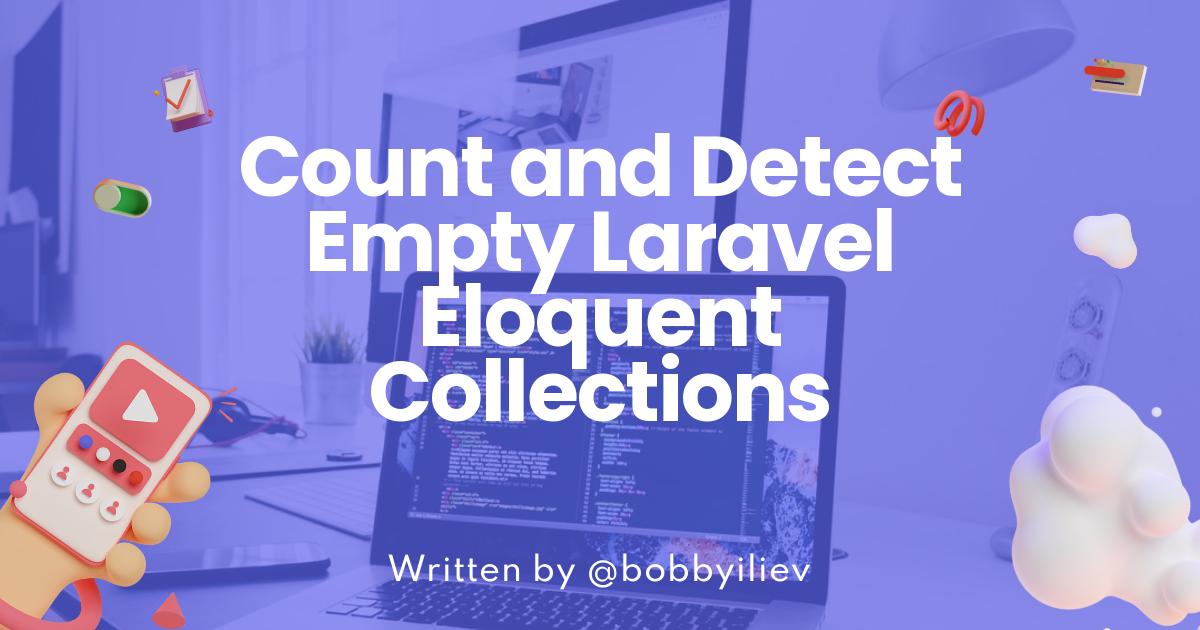

If you wanted to delete only some specific entries, you could first get the entries as follows: Post::query()->delete()


To do the same thing with Eloquent, we could use the DB facade as follows: DB::table( 'posts')->truncate() Īlternatively, you could call the truncate() method directly on your model: Post ::truncate() ĭelete all entries using the delete() method This will basically truncate the entire table, and it would also reset the auto-incrementing IDs to zero. Learn more about the DevDojo sponsorship program and see your logo here to get your brand in front of thousands of developers.
#Laravel eloquent delete how to
View Website Learn how to code your own blockchain and create your own crypto-currency with the CoinCamp interactive and fun online training platform. If we were writing pure SQL, to delete all entries from a table, we could use the TRUNCATE function as follows: Using truncate to delete all entries from a table We will use a model called Post as an example in this tutorial. Or you could use this awesome script to do the installation:
#Laravel eloquent delete install
How to Install Laravel on DigitalOcean with 1-Click.If you do not have that yet, you can follow the steps from this tutorial on how to do that:
#Laravel eloquent delete free
If you wish, you can use my affiliate code to get free $100 DigitalOcean credit to spin up your own servers! I will be using a DigitalOcean Ubuntu Droplet for this demo. In this tutorial, you will learn how to delete/truncate all entries in a table using Laravel Eloquent! Prerequisitesīefore you start, you would need to have a Laravel application up and running. More often than not, when getting some results from your database, you would want to order them based on specific criteria. Laravel provides a lot of handy methods that you could use to work with your Eloquent collections. This simplifies all CRUD (Create, read, update, and delete) operations and any other database queries. If you don't particularly like that approach, you will need to iterate your collection of organization products and call delete() on them individually.The Eloquent ORM included with Laravel provides you with an easy way of interacting with your database. now this will only destroy ids associated with the org $orgIds = array_intersect($org->products()->lists('id'), $ids) intersect the product ids for the org with those passed in As you mention in a comment, it won't restrict the deletion to only those products in the organization, so you would need to filter out those ids before passing the list into the destroy() method. It will load a new model for each id, and then call delete() on it. In this case, you can use the destroy method on the model that takes a list of ids. If you have event listeners for the deleting/ deleted model events, you will need to make sure the deletion happens in a way that each model is loaded and then deleted. The issue is that you're calling delete() on a Collection, which does not have that method. Is? From what I see, both find and get are returning Collections I guess, I'm also trying to understand what the difference between: $org->products()->find($ids)->delete()Īnd $org->products()->whereIn('id', $ids)->get()->delete() The stroy code works fine if I pass it a single id The model Product has several belongsTo relationships with other models.Ģ. I have verified that find() is returning a collection of products matching the specified ids.ġ. This gives me the following error: BadMethodCallException in Macroable.php line 81:Īt Collection->_call('delete', array()) in ProductsController.php line 251Īt Collection->delete() in ProductsController.php line 251Īt ProductsController->destroy('62100dd6-7ecf-4870-aa79-4b132e60c904,c4b369f1-d1ef-4aa2-b4df-b9bc300a4ff5') On the other end, my controller action looks like so: public function destroy($id) I call the stroy route using comma separated list of ids ( id is of postgres type uuid), like so: Request URL: I have the id's of all the records I wish to delete. I want to be able to delete multiple records from the database. Now this, from what I can see, should have been simple.


 0 kommentar(er)
0 kommentar(er)
